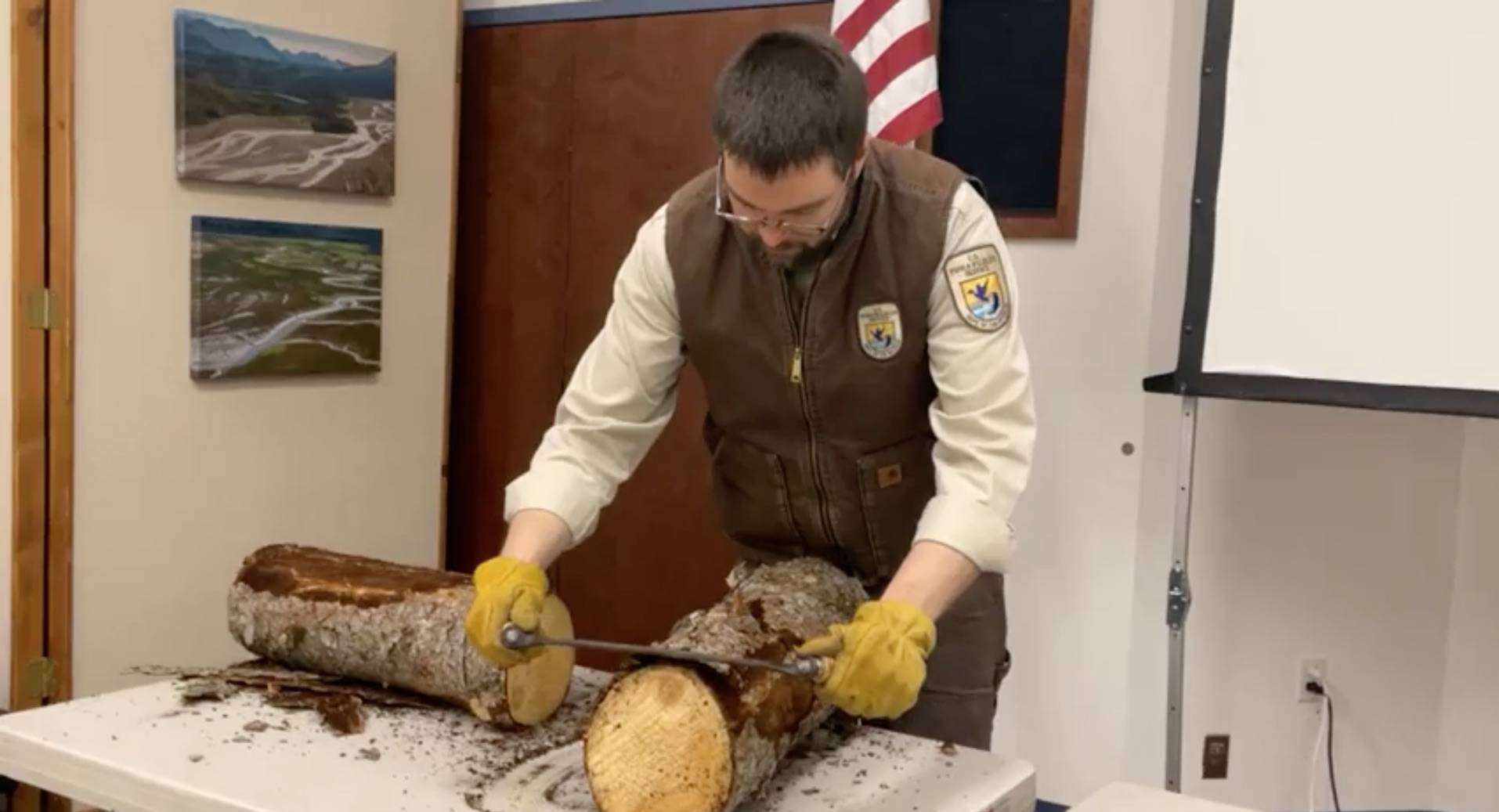A drawknife demo and a lesson on log notch types were highlights of the Kenai Wildlife Refuge’s latest installment in its Speaker Series, which focused on cabin camping on the Kenai.
During the session, which was livestreamed on Friday evening, Refuge Cabin Manager Daniel Saxton gave a brief history of cabins on the Kenai and explained the logistics of how they are constructed and maintained.
The Kenai’s oldest cabin predates statehood and was built around the turn of the century. For context, the refuge was established in 1941 and expanded in 1980, with the cabin program formally launched in 2005. The current network of cabins includes 14 that can be reserved in advance and two that are available on a first-come, first-served basis.
To reserve one of the refuge’s cabins, people can go online to recreation.gov and search for “Kenai National Wildlife Refuge cabins.” The tab titled “Date Range Availability” will show each cabin and when it is available. Most run $35 to $45 per night, with full refunds offered if natural roadblocks like a wildfire or impassable roads prevent access to the cabin. Cabins can be booked up to six months in advance, with people allowed to book one trip per month for up to seven nights.
Saxton said that the refuge’s program is so neat because of the history of cabins in Alaska and because of the recreational service they provide to the public.
“It’s because of the history of trapping and hunting and those guys building cabins and using cabins that we have the program here and it’s just neat,” Saxton said. “You know, everyone has a cabin here in Alaska — you don’t have to worry about upkeep and maintenance, you can leave that to us.”
Saxton also demonstrated how to use some of the tools the refuge uses during their work maintaining cabins, including how to peel and debark a log using a drawknife. Standing at the end of a log on a table, Saxton held the drawknife at the end farthest from him and pulled it toward him, shearing bark in the process. The angle at which the knife is held, Saxton said, depends on how “big of a bit” will be taken out of the log. In cases of large knots, Saxton said he usually just nicks those off with a chainsaw.
“If it feels right, it is right,” Saxton said.
Once the logs are prepared, Saxton explained there are several ways to notch the ends to allow them to be stacked on top of each other. A saddle notch is common, he said, but the type of notch can really depend on what purpose the final structure is meant to serve. Among the refuge’s cabins, there’s a variety.
Ultimately, the cabin program is beneficial to a diverse group of users, he said.
“They’re really popular with families with young children, or folks who may be new to Alaska and are wary of camping in bear country, [or] anyone who appreciates the warmth of a fire on a cold winter’s day, or the sound of rainfall on a metal roof,” Saxton said.
The event, which was originally scheduled to take place at the Kenai Chamber of Commerce and Visitor Center, was shifted to a Facebook Live event due to COVID-19. The full event can be watched on the Kenai Chamber of Commerce and Visitor Center’s Facebook page.
Reach reporter Ashlyn O’Hara at ashlyn.ohara@peninsuaclarion.com.

